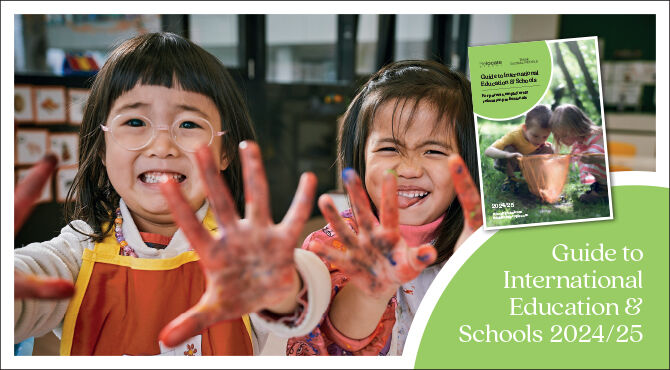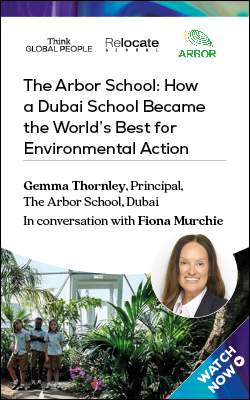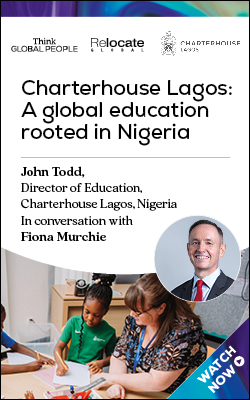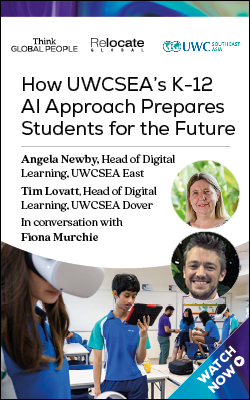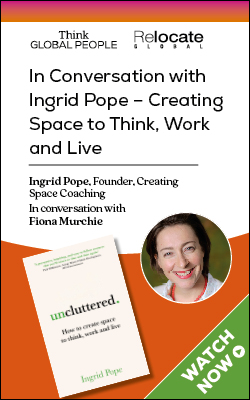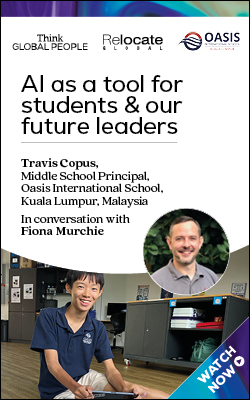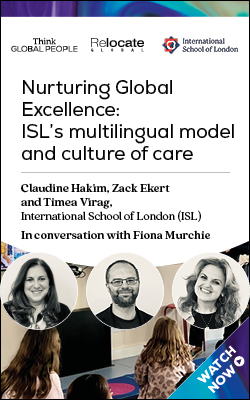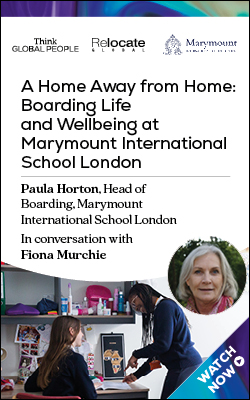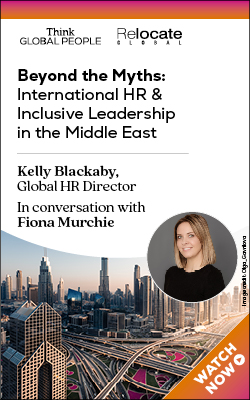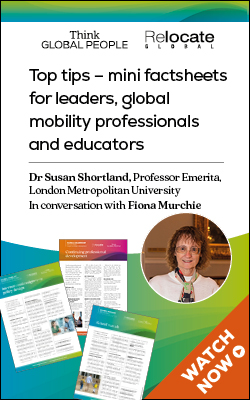Bright and early: the best start for young international learners
From Singapore to Saudi, high-quality early childhood education is a growing priority. Sally Robinson talks to the settings that are getting it right.
This article is taken from the Autumn 2024 issue of
Think Global People magazine
Click on the cover to access the digital edition.International research shows children who spend longer in early years provision have better educational outcomes later on. According to the OECD, children learn at a faster rate behaviourally, cognitively, physically and socially in the first five years than at any other time. No surprise then that early childhood education and care are booming.“The child’s brain will have developed to 90% of its adult size by the time they are five,” says Oanh Crouch, director of education at Globeducate, who has taught in early years settings in Australia, Finland, Thailand and the UK. “There is so much research to confirm that 0–5 years is an integral part of learning.”Research shows that connections needed for many higher-level activities are formed during this time. “The skills learned at this stage are the foundation for ongoing educational success,” says Owen Murphy, principal of the Bavarian International School’s (BIS) Munich campus. “We also place a lot of emphasis on socio-emotional development because at this stage students are forming themselves as individuals.”Approaches to the early years vary between regions: Scandinavian countries are known for their play-based, child-centred approaches; Singapore for its structured programmes and bilingual policies; and New Zealand for its nurturing Te Whariki early childhood programme.In Denmark, early years education is highly valued, reflecting the broader cultural emphasis on child development and wellbeing. “Danish parents see early childhood education not just as preparation for school, but also as a critical period for social, emotional and cognitive development,” says Catalina Gardescu, head of admissions at the Copenhagen International School.It’s a similar story in the MENA region. The Kingdom of Saudi Arabia’s Vision 2030 plan sets ambitious goals for early childhood education, including access to high-quality programmes. And in Dubai, enrolments at private early childhood centres grew by 16% last year.
Does curriculum matter?
The concept of curriculum takes on a less rigid meaning in early years settings. In the UK, the Early Years Foundation Stage (EYFS) uses a play-based approach and sets standards for the learning, development and care of children aged 0–5, which all nurseries, schools and childminders must follow.The International Baccalaureate also offers early years provision as part of its Primary Years Programme (PYP), which focuses on developing a child’s physical, cognitive and socio-emotional skills.Play is the number one tool for effective learning at this stage, according to Globeducate’s Oanh Crouch. The group’s network of 60 international schools in 12 countries uses the research-led Birth to 5 Matters programme, which provides non-statutory guidance for the EYFS, encouraging settings to help children develop and learn through play.“Regardless of the curriculum, effective early years practice is making sure learning is facilitated through a practical and play-based approach,” says Oanh Crouch. “The child needs the flexibility to be curious and search out their own solutions.”A growing number of international schools follow the International Curriculum Association’s early years programme (IEYC), launched in 2016 to supplement its primary and middle years programmes that are taught in over 1,000 schools in 90 countries. “We saw a growing demand for an internationally-minded early years curriculum,” says Sarah Blackmore, director of the association. The programme, for 2–6 year olds, is now taught in over 400 schools in 60 countries and is particularly strong in South East Asia, East Asia and Africa.“Play is the IEYC language,” says Sarah Blackmore. “We understand the critical importance of early childhood education. It can’t be a diluted version of the primary programme. Through carefully designed play-based experiences, children develop essential cognitive, social and emotional skills in a fun and engaging environment.” There is also an emphasis on international mindedness and global competence, allowing young learners to contribute to their community.Creating an environment where children can learn independently under the guidance of expert educators is at the heart of the early years curriculum at the British School of Brussels (BSB). The programme is guided by Birth to 5 Matters and designed to harness the power of free-flow exploration, allowing children to delve into their interests.“We provide living experience of making choices, innovating, taking responsibility, facing challenge, thinking flexibly and learning how to learn,” says Esther O’Connor, team leader of primary at BSB. “Our early years children embark on a journey of inquiry-led discovery. We recognise that children develop in different ways and we believe in each child having opportunities to interact in positive relationships and environments that encourage their engagement.”As the popularity of the International Baccalaureate (IB) increases globally, schools are increasingly adopting its PYP early years programme for 3–6 year olds, where play is the primary driver for inquiry. It is used by the Bavarian International School, which has campuses in Munich-Schwabing and Haimhausen. “Learning through play allows children to have voice, choice and ownership while developing skills, knowledge and understanding,” says Nicola Moloney, vice principal and PYP coordinator at the BIS campus in Munich-Schwabing.The Copenhagen International School's (CIS) early years programme (for children aged 2–7) combines the IB PYP with elements of the Reggio Emilia approach. “This unique combination creates a dynamic learning environment that fosters creativity, critical thinking and a love for inquiry-based learning,” explains Catalina Gardescu. The IB PYP framework focuses on developing inquiry-based and critical thinking skills and provides a structured curriculum, while the Reggio Emilia approach allows children to explore their interests through hands-on activities in a nurturing environment. “We chose this blended approach to provide a holistic education that caters to diverse learning styles,” says Catalina Gardescu.The International School of London's (ISL) early years programme follows the EYFS framework because of its highly regarded holistic approach to child development. "We also integrate the philosophy of the International Baccaluareate Primary years Programme with the EYFS," says the school's Catherine Lister."Our curriculum emphasises the importance of play-based learning, which aligns perfectly with our commitment to fostering a love of learning in a natural and engaging environment."Other schools design their own curriculum, including The International School of Kuala Lumpur, which uses its own early childhood 'Provocations' programme for its youngest learners. Students are invited to explore, create and build using open-ended and hands-on materials to encourage them to discover and learn. The play-based approach uses guided inquiry to nurture curiosity to develop in all areas, from social-emotional to cognitive to pre-academic skills.“Our youngest learners are encouraged to be inventive and creative while learning to negotiate and work collaboratively,” says Azra Pathan, elementary school assistant principal. “We watch them and notice their interests. With this information, we provide more ‘Provocations’ during the second semester, which are geared towards their interests.”Read related articles
- Small world: early childhood education in an international setting
- What to consider when looking for an international school
- Outstanding early years education for international families webinar
Make the physical space count
A warm, nurturing and well-equipped physical space in early years education is crucial for encouraging exploration and social interaction.According to TASIS England there should be three ‘teachers’ in every early years classroom: the adults, the children and the environment. “A purposeful learning environment is designed to evoke curiosity, interest and joy from young learners,” says Melodi Jordan, head of lower school.“Children should have the opportunity to learn in diverse spaces with a range of materials. Opportunities for messy play, construction and the use of natural materials communicate creativity and exploration and are part of learning. Giving choices around what and how to play send the message children have ownership of their learning. As students develop, the physical space should be adjusted to provide further challenge. In this way, the child’s interaction with the physical space enables their success.”The learning space is also seen as the third teacher at the British School of Brussels. “It facilitates and enables learning,” says Esther O’Connor. “Our environment is designed to stimulate curiosity, with materials and spaces curated to reflect the diverse interests of our learners.” The school’s outside environment has equal importance to the indoor spaces, offering children the opportunity to connect with nature and unleash their curiosity. “From muddy adventures to scientific explorations, the great outdoors serves as a rich learning environment for us.”Outdoor learning is also a key feature of Globeducate’s early years practice. At many of its member schools classrooms open directly to the outdoors so children can garden, ride scooters, make pancakes in the muddy kitchen and build shelters and dens.Access to nature is also a crucial part of the Copenhagen International School's early childhood programme. The school is situated in the regenerated Nordhavn area of the city, once the old industrial port. The school has an extensive outdoor playground and proximity to green spaces enable frequent outdoor learning opportunities. “Field trips are an important part of the curriculum,” says Catalina Gardescu. They allow children to engage with nature, promoting physical activity, sensory exploration, and an appreciation for the environment.Inside, the CIS environment includes bright, spacious classrooms filled with natural light. The furniture is flexible and child-sized, allowing for easy reconfiguration to support different types of learning. “As well there is access to a variety of learning materials within the classroom to encourage self-directed, which is a core component of the Reggio Emilia play and learning approach integrated into CIS’s curriculum,” says Catalina Gardescu.A fluid learning environment is central to the Bavarian International School's city campus in Munich-Schwabing, which uses a centre-based approach with two home-room bases where children start the day. These rooms have ever-changing learning areas for play and exploration, which might include a loft, kitchen or a cardboard tree for fantasy play. In addition, two adjoining rooms open to create a fluid learning environment. “These rooms focus on sensory learning and arts and crafts and there is a quiet rest area with mattresses,” says Owen Murphy. Outdoor areas in Munich include climbing frames, model structures and a mud kitchen while the campus in Haimhausen is surrounded by green space with a forest on its doorstep.The power of bilingual
Research shows bilingual children have improved cognitive flexibility, focus and creativity and better problem-solving skills. The early years are the prime time for the brain to open up to be more flexible and adaptable to learning. “I have witnessed children learn new languages so quickly at this age,” says Oanh Crouch. “Most of our schools are multilingual settings and it is a joy to watch our youngest students flip from one language to another seamlessly.”In Singapore, learning a second language is compulsory from primary school and many early childhood settings encourage bilingualism earlier. In Denmark, students at CIS learn English and Danish and are encouraged to read and speak in their native languages – over 50 are spoken around the campus – which fosters strong communication skills.Choosing a school
Top tips from early years experts- Schools are like shoes, one size does not fit all, says Globeducate’s Oanh Crouch. “Simply ask yourself, ‘will my child be happy in this school?’ If your child feels safe and happy, then they will be open to learning.”
- Look out for spaces that are deliberately designed for play-based learning, says the Bavarian International School Munich-Schwabing’s principal, Owen Murphy. “Visit during the school day – nothing is better than seeing what a totally normal school day looks like.”
- Seek settings that provide personalised attention, a supportive community. and a curriculum designed to support both academic and emotional growth. “Ensure any setting offers structured learning opportunities, ample outdoor activities and an enthusiastic, engaged staff that provide a nurturing, enabling environment,” says Esther O’Connor of the British School of Brussels.
- Look out for red flags. These include high staff turnover, which can disrupt children’s emotional security and learning continuity, and poor communication or a lack of transparency about the curriculum,” says the Copenhagen International School's Catalina Gardescu. “Environments that are overly rigid or lack opportunities for creative and outdoor play may not support holistic child development.
- Find out how the school communicates with its parents and what opportunities there are to get involved. “The most important thing to ask is what and how your child will be learning and how that will be communicated to you,” says Globeducate’s Oanh Crouch.

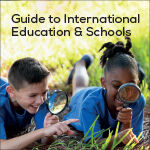 Read Relocate Global's Guide to International Education & Schools 2022/23 which is packed with expert tips and information for those relocating and the professionals supporting them.
Read Relocate Global's Guide to International Education & Schools 2022/23 which is packed with expert tips and information for those relocating and the professionals supporting them.

Relocate Global's Guide to International Education & Schools 2024/25 coming soon!
Find out more about the Think Global People and Think Women community and events.


Subscribe to Relocate Extra, our monthly newsletter, to get all the latest international assignments and global mobility news.Relocate’s new Global Mobility Toolkit provides free information, practical advice and support for HR, global mobility managers and global teams operating overseas.
©2025 Re:locate magazine, published by Profile Locations, Spray Hill, Hastings Road, Lamberhurst, Kent TN3 8JB. All rights reserved. This publication (or any part thereof) may not be reproduced in any form without the prior written permission of Profile Locations. Profile Locations accepts no liability for the accuracy of the contents or any opinions expressed herein.




